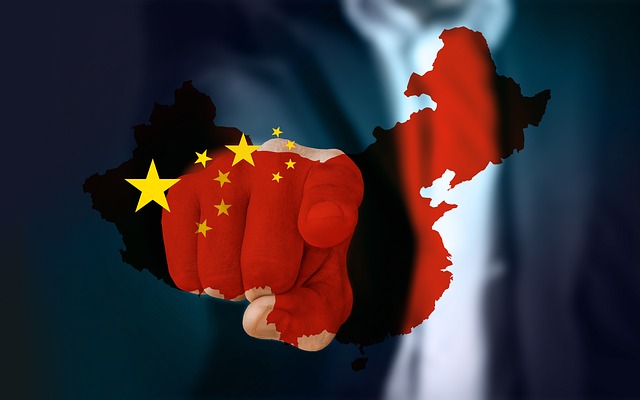The Comprehensive Economic Partnership that was signed by 15 Asian countries caused huge reaction among political circles. Some people saw this as a sign of future dollar collapse in terms of backup currency. Surely, for them China was the main cause for that possible crisis.
On the other hand, others did not see any negative impact in the new partnership and believe that Yankee currency keeps leading the word market. Well, the truth is somewhere in the middle. About this in the material Minfin.com.ua.
China is taking over Asia.
So, what makes the whole world doubts in the dollar’s power again? In the result of eight years’ negotiations the Comprehensive Regional Economic Partnership (RCEP) agreement was finally signed on November 15th.
The agreement covered 10 countries ASEAN (The Association of Southeast Asian Nations) – Singapore, Vietnam, Indonesia, Malaysia, Laos, Thailand, the Philippines, Brunei, Cambodia, and Myanmar. As well as 5 key trading partners such as Australia, New Zealand, China, Japan, and South Korea.
Bloomberg has called the RCEP as “the largest trade deal in the world: 15 countries, 2.2 billion people with a combined GDP of $26.2 trillion,” which is about a third of the world’s gross product. In addition, RCEP covers about 20% of the world’s exports. In comparison, the European Union provides about 22% of world GDP and 33% of world exports (according to the Observer Research Foundation – ORF).
Another thing that makes the partnerships different is that, the leading country in the EU’s Germany, is not that big in economical aspects comparing to other major European Union members. However, China is much larger than its RCEP partners. Therefore, this partnership agreement is considered as a victory for the Celestial Empire. And the new association is interpreted as an element of the structure of the new world order where Beijing will take the leading role in the whole Asia. And, obviously, in other regions as well.
Artem Deyev, the head of an analytical department in AMarkets (international CFD broker), says, “In fact, the leader of the world economy was shifted: instead of the USA that has carried this title for almost 150 years, now the first economy of the world belongs to the PRC. Moreover, important to mention that this agreement is a good blow to all U.S. attempts creating “their” economic cooperation zones. In addition, it became the largest united market on the planet.”
Just as a reminder, in 2017 Donald Trump signed a memorandum on the withdrawal of the United States from the Trans-Pacific Partnership (TPP), where the main idea was to create a free trade zone in the Asia-Pacific region. In fact, so far the same zone was created with the participation of China.
Based on reports of the Peterson Institute for International Economics RCEP would help to boost regional GDP, where the annual grow could be at a rate of $186 billion, while the TPP would only grow at $147 billion.
Another important point that economists underline is the regional shift in China’s trade. According to the Institute of International Finance (in Washington), in the first part of this year ASEAN countries overtook the European Union and become China’s largest trading partners. It means that during the pandemic, Beijing was able to successfully change the focus on other markets, and that certainly softened the blow to the economy that was caused by the new global crisis.
Nevertheless, with all these points the main idea is that the new partnership could help to implement Beijing’s most ambitious goal. Turn yuan into the leading currency where it will take current functions of the dollar as the world’s reserve currency. For example, by ensuring that all the purchases and sales are done in yuan within the RCEP, China turns at least 20 percent of all world trade to its national currency. In theory, this could push the agreement’s participating countries to revise their reserve structure in favor of the Chinese currency.
Why there will not be an easy way for Beijing?
However, those who believe that the RCEP is not able to disrupt the world’s financial arrangements also have their own, no less valid, arguments.
Firstly, it is not quite proper to say that China will be in a head chair of the new partnership. Surely, Beijing is one of the most important partners.
It is important to keep in mind that the creation of the new association was launched back in 2011 by ASEAN countries. In fact, as The Economist points out, the fastest way to anger Asian diplomats is to claim that China in the head of the partnership. It means that it will be difficult for China to develop the pact in the right way for them.
Secondly, the agreement does not cover all possible aspects of the cooperation. The World Street Journal calls the deal “devoid of ambition”.
The Center for Strategic and International Studies notes that the RCEP does not include environmental or labor laws. And the sections regarding dispute settlement, competition, services, and investment are relatively weak.
Not mentioning the fact that the terms of the agreement do not cover the economies’ liberalization of the member states, and leave financial issues aside.
This does not give China any reason to talk about a possible change in the payments’ currency within the partnership. Of course, this issue can be raised later. But it is unlikely that Japan, which has great impact in the RCEP, would consider such a suggestion.
The Director of the Center for Postindustrial Society Studies Vladislav Inozemtsev says that almost all trades between China and Japan are denominated in dollars.
For the currency shifts in terms of use, the creation of the new partnership has no consequences.
The agreement itself is primarily aimed at taking off trading barriers. About 90% of tariffs are eliminated in terms of this partnership. Moreover, the main beneficiary may not be China at all.
For example, Peter Petrie from the Peterson Institute for International Economics and Michael Plummer of Johns Hopkins University believes that Japan and South Korea may benefit the most from the new agreement. It is expected that participation in the new agreement increases the actual income of these countries in 1 percent by 2030, while China increases it in only 0.3 percent.
Thirdly, the agreement does not cover the all regions considering that India refused to sign the agreement. In case of India were to join the RCEP, it would be the third largest economy in the new partnership. Additionally, India is a part of some bilateral trade agreements. Therefore, India’s withdrawal took away from the RCEP some of the main pros of market liberalization. India still can become a part of the association. But its relations with China have deteriorated dramatically during the last year.
And, last but not the least important circumstance is that it will take a long time for the partnership to actually start to work. To begin with, all signatory countries need to ratify the signed agreement. And according to the politicians’ predictions, it may not happen until the beginning of 2022. Moreover, tariffs will be canceled gradually – in a period of 20 years after the agreement enters into force.
For instance, Japan will retain high import duties on some politically sensitive agricultural products (rice, wheat, beef and pork, dairy products and sugar). However, inside the TPP agreement, import duties are going to be cancelled. And this is not the only example that TPP has a deeper integration than the RCEP.
Vladislav Inozemtsev summed up, “I consider this alliance as a very local one. As for now, it has two sides of a coin. On the one hand, it is a response to the American attempt in creating a free trade zone, that Trump withdrew from. On the other hand, there is an important shift of production from China to less developed Asian countries. New production chains are being built. And the task of this union is to remove trade barriers as goods are often transported from country to country in the production process. That is why this alliance certainly has economic value.”
Why Yuan is not ready to stand against the Dollar?
And even if we just imagine that China still can push its currency into the new union, could that be a threat to the dollar? Definitely, no. After all, the dollar’s fundamental position is determined not only by the fact that world trade is conducted in USD. Although about a half of international trade is billed in U.S. dollars. And about 85% of all foreign exchange transactions take place in relation to the U.S. dollar.
According to the latest Bloomberg statistics based on data from SWIFT, the dollar accounted for 37.6% of customer and institutional international payments made via SWIFT in last October. Whereas the share of the yuan was only 1.66%.
It is worth mentioning that the Chinese currency was in 35th place in October 2010, when SWIFT began collecting and monitoring the data. And in 2014 yuan got on the list of top six most popular currencies for international payments. However, one of the key dollar’s position is that a large part of the world’s debt is issued in USD.
Vladislav Inozemtsev explained, “The position of the dollar as a reserve currency determines by the fact that exactly in the dollar a lot of debts are made. When a crisis arises, the counterparties carrying out operations in other currencies, trying to change all assets into dollars as fast as it is possible in order to “close” all the debts made in the U.S. dollar. Considering that fact the reserves of central banks are being formed.”
Recently, answering the question about the possibility of the USD losing its reserve currency status someday, the head of FRS Jerome Powell said that right now there is nothing that could threaten to the U.S. currency, adding, “we have to keep the same way to guarantee the dollar status.”
But the absence of an actual threat from the yuan side does not mean that the dollar is really stable. For example, European Central Bank President Christine Lagarde doesn’t hide her ambitions about making euro the main reserve currency.
By the way, in October the euro became the most popular currency among the international payments, overcoming the dollar for the first time since February 2013. Nevertheless, that kind of competition has been happening for a long time. As for now, the issue of maintaining the status quo for the dollar will be in the hands of the new U.S. president, and possibly in the hands of the new head of the Federal Reserve System.
Source: https://minfin.com.ua/invest/articles/kitay-nastupaet-na-dollar-stoit-li-zapasatsya-yuanem/




